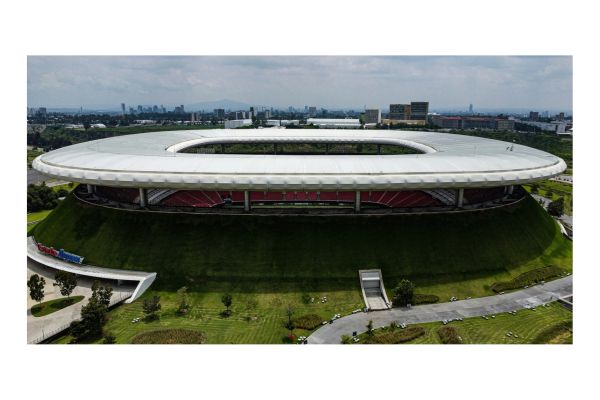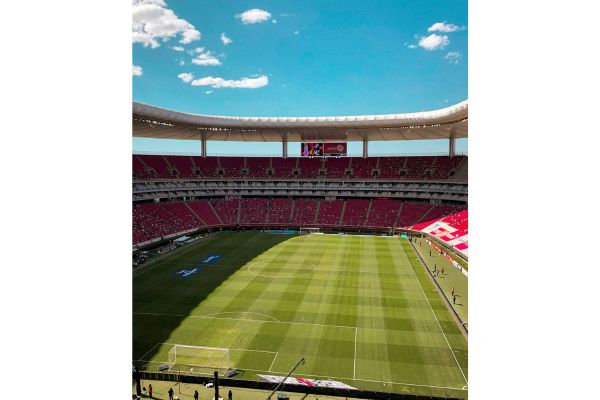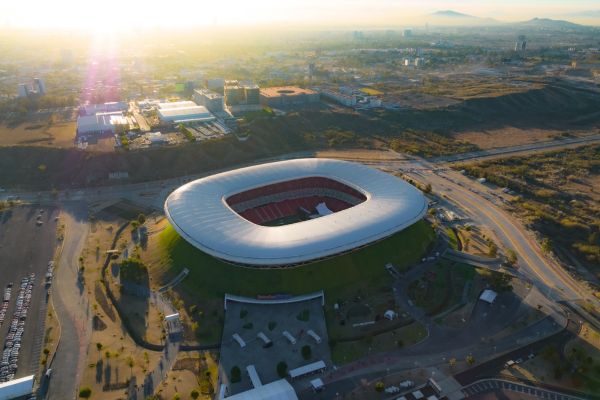A sharp bang echoes as a plastic seat snaps upright, slapping against the backrest. Then another. And another. A ripple of noise spreads like a drumroll across the stadium. Row after row, the seats spring up in synchronized claps, creating a rolling thunder of plastic percussion. It sounds like a rumble — deep, rising, alive.
But it doesn’t last. Hands reach down, seats are pulled back into place, and bodies settle again. People laugh, turn to each other, chat, cheer, snack. Others follow something sweeping around the stands — a movement that builds, section by section: people standing, arms raised high, then dropping back into their seats. It’s the Mexican Wave in full flow.
Most of the crowd are Chivas de Guadalajara fans, reveling in their team’s dominance on the pitch. The wave comes around again, and again — followed by roars, by the boom of seats, by more rumble. A rumble like a volcano about to erupt.
And it fits — because these fans are in a volcano. Welcome to El Volcán: Estadio Akron.
History & Architecture:

Officially opened on July 30, 2010, with an inaugural friendly match between Chivas and Manchester United, Estadio Akron was designed to be more than just a football venue — it was built as a statement.
The stadium’s architecture takes direct inspiration from a volcano. From the outside, it rises like a gentle hill, its grassy slopes blending into the landscape of the La Primavera Biosphere Reserve that surrounds it. On top, a sleek, cloud-like roof hovers over the structure, giving it a futuristic yet organic look. Inside, the seating forms a glowing red crater, wrapping around the field and adding to the volcanic feel.

The idea was to create a stadium that didn’t just sit on the land, but became part of it — a place where modern design meets natural form. Estadio Akron, formerly known as Estadio Omnilife, doesn’t just resemble a volcano. It is one — in spirit, in shape, and most of all, in sound.

Because the only thing missing from this quiet green mound is an eruption. And when Chivas scores, or when the Mexican national team plays here, that missing piece roars to life. The fans bring the fire, the sound, the shaking. They make the volcano rumble.
And that wave, rolling through the stands like a living thing, is more than just a fun crowd moment — it has its own fascinating story. Want to know where it started, how it got its name, and why it’s such a global phenomenon?
Check out our next post: The Mexican Wave That Isn't Actually Mexican.
